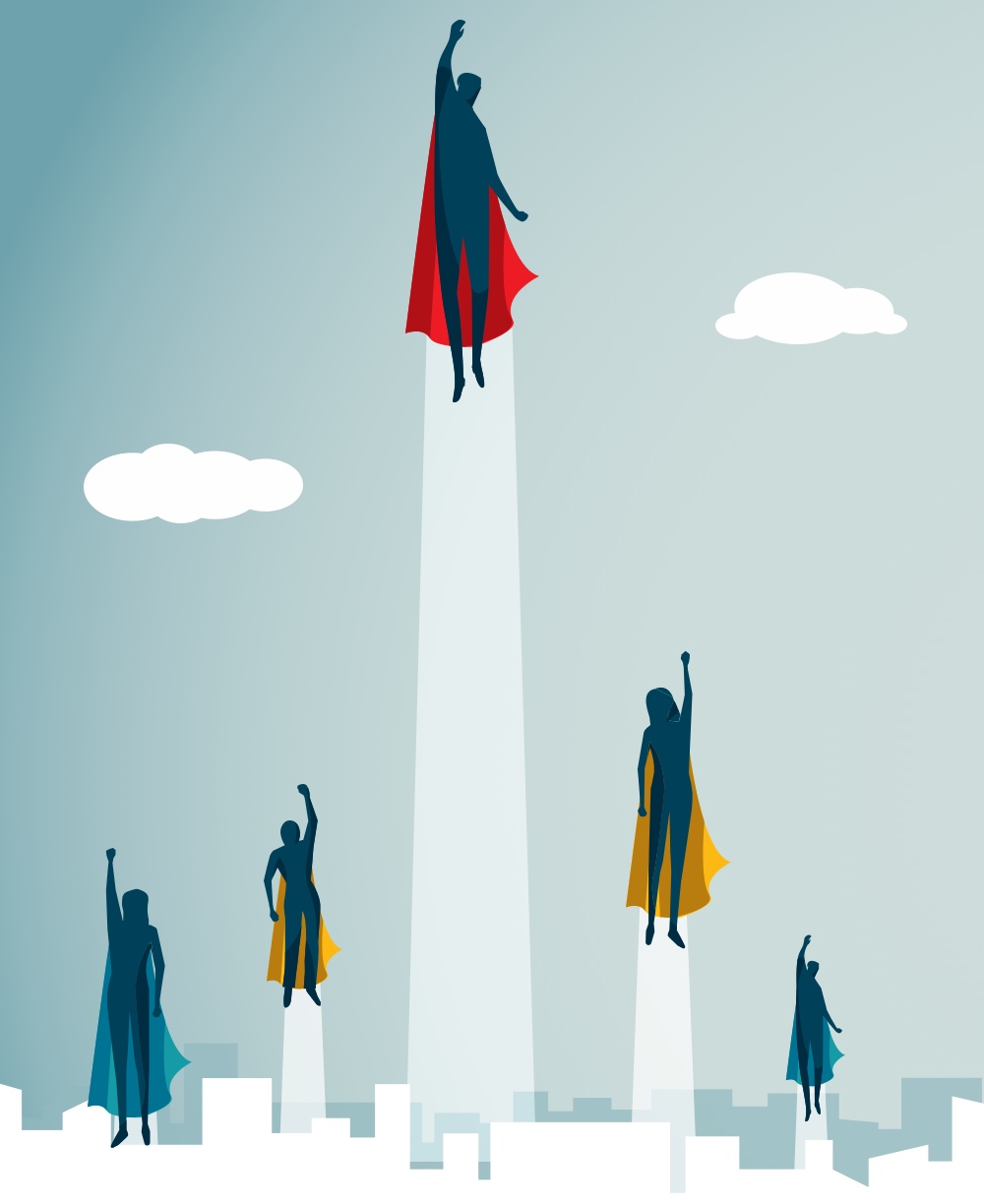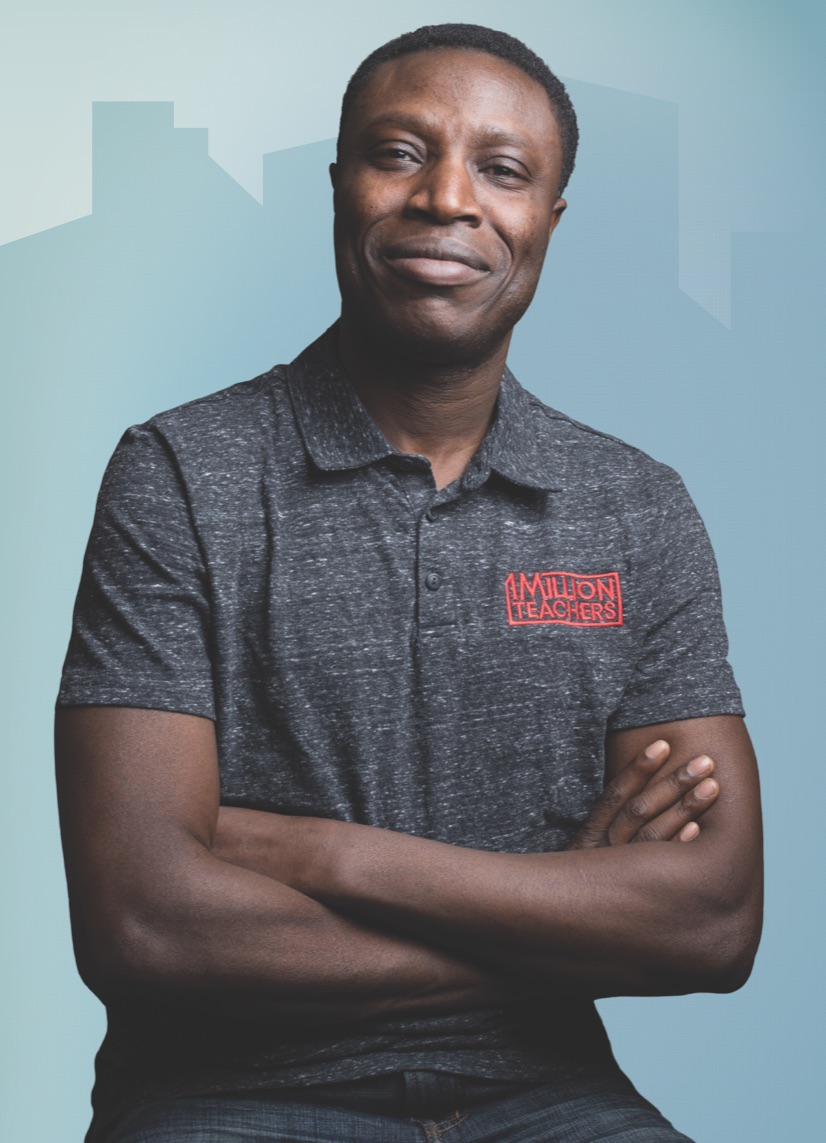The Rise of the social enterprise

The idea of starting a company was not part of Nazaneen Qauomi’s plan in life. Nor was it necessarily something Hakeem Subair figured he’d do.
But the two Smith alumni, who both immigrated to Canada in the past decade—from Afghanistan and Nigeria, respectively—knew they wanted to help people and solve persistent problems in their home countries.
This deep desire to make lives better eventually led them to Smith, where they both earned a Master of Management Innovation and Entrepreneurship (MMIE) degree. It was at Smith that they developed the ideas that would turn into their companies, or, more specifically, their social enterprises—organizations that combine a strong social mission with a for-profit business model.
Qauomi’s social enterprise is Red Gold of Afghanistan. It empowers women in Afghanistan through the cultivation and sale of premium Afghan saffron. Subair’s company, 1 Million Teachers, provides essential training for teachers in sub-Saharan Africa, where there is a critical shortage of well-trained teachers.
“I had this sense that if I didn’t do this, I would regret it. I knew that it was so important. The fear of failure kept me awake at night,” says Subair, MMIE’17, who saw first-hand the problems within the education system in Nigeria. “I believed I could do this, and that all of my skills and work experience had prepared me for this work.”
Before she founded Red Gold of Afghanistan, Qauomi, MMIE’19, too, could not stop thinking of how she wanted to do something to help the people of her homeland. She was born and raised in Afghanistan but also spent several years in Pakistan after her family fled the oppressive Taliban regime. “When I was little, I really wanted to be a doctor because I thought that would be the best way to help people,” Qauomi says.
Even as a young girl she could see how Afghans struggled with poverty, poor education (no education at all for girls under the Taliban) and a lack of health care. “My father always encouraged me. We would talk together about it, with him creating this image of me in the long corridors of the hospital . . . This made me believe in myself. I wanted to work hard and be the best I could be.”

Qauomi and Subair are two examples of an emerging group of entrepreneurs who are launching social enterprises rather than companies with traditional corporate or non-profit structures. Why is the social-enterprise model catching on? There are several reasons. One is simply the desire by many in business (especially younger people) to make an impact in a way that benefits people and the planet.
But there’s more: disparities in societies are growing. The COVID-19 pandemic has only made things worse, says Shari Hughson, director of the MMIE program, who has worked with both Qauomi and Subair to develop their social enterprises. “Corporate structures have not succeeded in addressing the disparities and, at the same time, non-profits are struggling and can’t survive on fundraising alone.”
“All we knew was that there was a shortage of 69 million teachers worldwide. The region that needed them the most was sub-Saharan Africa.”
– Hakeem Subair, co-founder of 1 Million Teachers
Social enterprises might be an answer. “There is a huge consumer push for people and the planet to come first, and there is an inability within the current models to make it work,” Hughson adds. “Social enterprises fill the gap. They are a for-profit model, but are started for a specific social purpose. Profits are largely secondary to that social mission.”
Not everyone, of course, is made to be a social-enterprise entrepreneur. It takes a person with a certain kind of passion, persistence and drive to do it, says Hughson. Subair and Qauomi are prime examples. “They are entrepreneurs who like to push the limits, and they strongly believe they can make an impact on the world. They are passionate about the issue they want to address and can’t stop thinking about it,” she says.

In Nigeria, Subair worked in banking, steadily moving from entry-level positions to managerial roles. But he felt restless. He always wanted to start new projects and adventures.

Hakeem Subair is the co-founder of 1 Million Teachers.
When he and his wife (who had just started work after medical school) began to look for child care for their daughter, they realized how few options were available and how dire the shortage of experienced caregivers and teachers was in the country.
Instead of searching for care outside their home, they decided to start their own child-care centre and hire teachers themselves. In the beginning, a few children of friends attended, as well as their own, but the school grew quickly. Within a couple of years, they had almost 200 children. But finding and keeping teachers was a constant struggle, Subair says.
Seeking more opportunities for himself and his family, Subair moved to Canada in 2012. He studied business at the University of Windsor before enrolling in the MMIE program at Smith. Addressing the education situation in Nigeria was always in the back of his mind. For his MMIE capstone project, Subair and several fellow students developed 1 Million Teachers.
“All we knew was that there was a shortage of 69 million teachers worldwide, according to UNESCO (United Nations Educational, Scientific and Cultural Organization). The region that needed them the most was sub-Saharan Africa,” says Subair, who co-founded 1 Million Teachers with Rizma Butt, MMIE’17, and Asma Minhas, MMIE’21. Subair is CEO and Butt is COO.
“We wanted to do something about it, try to figure out how we could increase access to teachers and, particularly, increase the quality of teachers,” Subair says.

In Kabul, Qauomi nearly did become a doctor. She completed four of seven years of medical school before her family left Afghanistan for Canada in 2014. Her Afghan medical-school credits, however, were not recognized in this country. So she decided to shift gears.
She studied biology at York University, worked at Tim Hortons part-time and cared for her father, who, soon after arriving in Canada, was diagnosed with early-onset Alzheimer’s. All the while, she kept a running list of ideas about how to help people in her home country. They included everything from starting a digital library, to developing the country’s agricultural resources, to opening a hospital.

Nazaneen Qauomi is leading the social enterprise Red Gold of Afghanistan.
One day, she attended a leadership conference in Guelph, Ont., which led to an idea to help women in the agricultural sector in Afghanistan. After years of war, women in the country needed support to re-enter the workforce so they could bring financial stability to their families and allow their children to go to school.
Qauomi began researching saffron, the most expensive spice in the world. She knew there was an opportunity to provide sustainable work to Afghan women through its planting, harvesting and sale. She applied to the Clinton Global Initiative and attended its annual university conference in 2017 in Boston. She then decided to develop her company while earning her MMIE degree at Smith.
She also attended the Queen’s Innovation Centre Summer Initiative (QICSI) in 2019, competing in the Dunin-Deshpande Summer Pitch Competition, which awarded Qauomi and co-founders Mustafa Ansari (MMIE’19) and Herman Kaur (MEng’19) $10,000 in seed money to visit Afghanistan and help get Red Gold of Afghanistan started.
“Afghanistan has always been seen as a place of war,” says Qauomi, who now runs the company on her own. “I want to create a name for this country through the sale of premium saffron, which is the best in the world. It has so many different uses—as a culinary spice and tea, but also as a healing antioxidant remedy that can help women gain strength after giving birth and as an anti-depressant.”

Starting and running a social enterprise is not an easy endeavour. The hard part is the customer side of the business, says Hughson. How do you make money?
In Qauomi’s case, it’s easier since her company sells a tangible product (saffron) that customers buy. Revenue from those sales can then funnel back to Afghan women to grow the saffron, buy the necessary land and keep their business economically viable. Since Afghan saffron is a premium product, the price customers pay directly funds the social mission of Red Gold of Afghanistan—to keep Afghan women working and supporting their families.
Figuring out how to make money is a little tougher for a service social enterprise like 1 Million Teachers. Its teacher-clients don’t necessarily pay for its educational services, so it must find someone to buy those services for them.
Subair and his colleagues have found ways to make that happen. They’ve secured government contracts in certain African countries. Through this model, 1 Million Teachers has become a supplier to these countries, providing quality training to teachers. Other potential customers include schools in Canada. They can sponsor 1 Million Teachers and provide ongoing funding for the organization. One Million Teachers has also partnered with Queen’s University’s Faculty of Education, which helps develop program content and provides teacher-education expertise.
Social enterprises can take more time to reach a profitable level of operation than typical companies, says Hughson. The key is to find a sustainable business model from the outset, with the goal of continually pumping revenue into the organization to fund its social mission for the long term.
There is a trajectory Hughson described while Subair was at Smith that he feels he has loosely followed while growing 1 Million Teachers. He’s moved from uninformed optimism (being passionate and somewhat naïve in the beginning), to informed pessimism (after seeing the magnitude of the problems and project), and finally to informed optimism, where he is today.
“Even though there are challenges, there is a light at the end of the tunnel,” he says. “I think that’s the track we are on. Even though we have our doubts and fears, every day opens a new chapter, a new partnership.”
And while he, like Qauomi, may not have expected this to be the path his life would take, Subair is fully invested. He says 1 Million Teachers is a lifelong project—along with teaching and providing mentorship to other budding social entrepreneurs—that he hopes will transform the lives of students and families in Africa, and beyond.

Corporate culture shift
Big companies and non-profits are borrowing from the social enterprise playbook.
Jean-Baptiste Litrico, Distinguished Faculty Fellow of Strategy and director of the Centre for Social Impact at Smith, studies the emergence of new organizational forms. The social enterprise is of special interest because, he says, it’s a hybrid model that has the potential to drive great changes in business and society.
Through his research, Litrico has seen a shift in the non-profit sector. Due in large part to a decrease in government funding, non-profits are seeking ways to blend revenue generation with their social missions. “In the past, these organizations used to see revenue generation as separate from social impact,” he says. “Nowadays, they are trying to realize their social mission and generate revenue at the same time.”
For example, a museum might once have added a shop or café to boost revenue—an activity unconnected to the museum’s core mission. Today, however, an organization supporting families with autistic children might create new programs, available for a fee, to generate revenue and provide additional support for its beneficiaries.
On the flip side, large corporations are moving into the social-enterprise sphere. They recognize that consumers no longer want only traditional products and services. People also want companies to tackle inequalities and societal challenges that are going unaddressed, in many respects, by governments.
There are many challenges with this transition, however. It requires a huge cultural shift within a company, Litrico explains. New skills are required and there must be buy-in from employees at all levels. Measuring a firm’s social impact is also a challenging endeavour, he says.
“There are many good initiatives happening, which is really positive,” says Litrico. He cites Patagonia as an example. The apparel retailer has successfully blended social purpose into its corporate structure. But most companies have a long way to go. “You won’t see a real shift as long as the legal and financial structures within corporations remain the same. Organizations need to develop a framework to assess and manage their social impact.”
